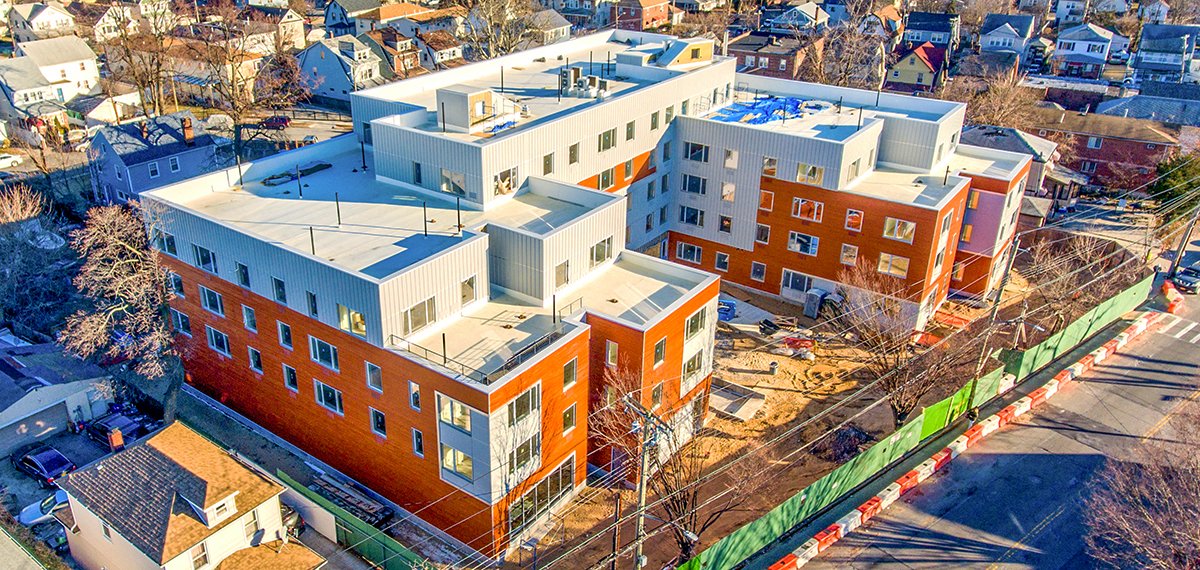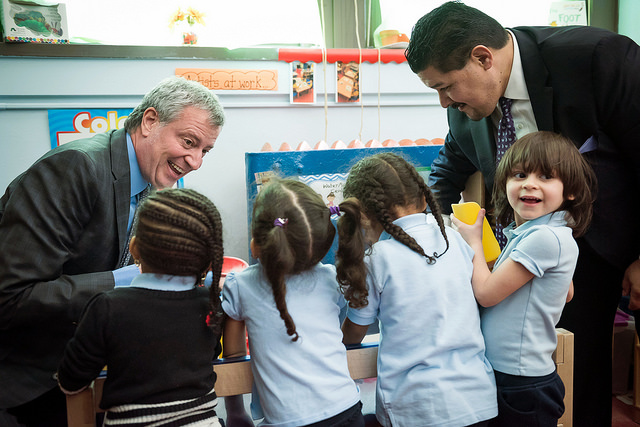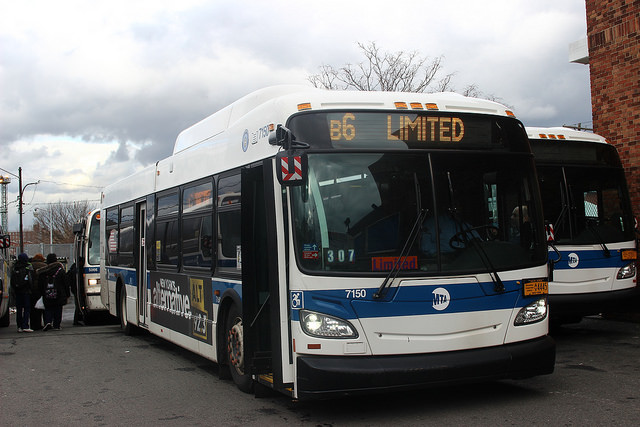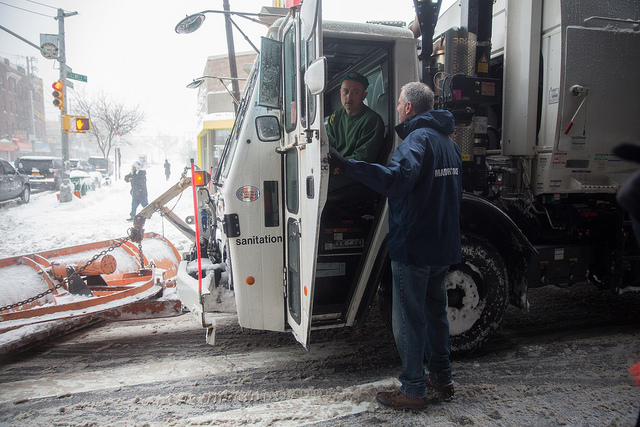To Maximize Affordable Housing, Increase Collaboration Between Public and Private Sectors

(photo: @NYCHousing)
The millions of New Yorkers struggling to deal with impacts of an urgent housing crisis deserve to see more collaboration between government officials and industry leaders who have the power to provide more affordable homes for low- and middle-income families.
Fortunately, the recently-passed state budget provides a reminder of what can be achieved when public officials advance smart, pro-housing policies with appropriate input and feedback from local leaders and those who build and preserve affordable housing. Alongside ongoing positive strides at the city level, New York City is well-positioned to further address its housing crisis and truly turn the tide in the months and years to come.
Just as importantly, this roadmap for crafting public policy – driven by an ongoing dialogue between the public and private sector – will help New York to more effectively mitigate recent changes at the federal level that have created some new challenges to maximizing affordable housing production.
Aside from continuing to advance New York State’s multi-billion-dollar commitment to financing affordable housing construction and preservation, the new state budget includes two prime case studies that demonstrate the benefits of increasing that kind of collaboration.
First, the state approved changes that will allow builders of affordable housing to utilize State Low-Income Housing Tax Credits (SLIHTC) separately from federal LIHTC. Previously, those credits could only be used together, even after recent federal tax cuts led to a devaluation in federal credits that made it harder to finance low-income housing.
Sensing the long-term implications of this challenge, NYSAFAH raised the issue directly with state lawmakers and administration officials. The result was a commonsense, pro-housing decision to split up, or bifurcate, the state and federal tax credits and to certificate the state credits – and these simple moves will attract millions in additional private financing for affordable housing each year, at no cost to the state.
Another area of fruitful collaboration involved a different issue regarding tax credits. The initial state budget proposal included a provision that would have deferred the use of several different credits – which play a crucial role in the production of affordable housing – for at least the next three years, and devalue the credits for a far greater period.
Again, NYSAFAH and other stakeholders understood from our experience on the ground that this was an area of tremendous concern. Taking pivotal tax credits off the table would have made it impossible to build and preserve affordable housing in communities that need it most.
And again, the conversations with and persistent advocacy before state officials led to a successful outcome – the tax credits were preserved and the affordable housing pipeline will continue to produce homes for low-income New Yorkers.
Together with the ongoing work at the local level, these statewide advances should demonstrate to all policymakers and stakeholders that open, fact-based dialogue is one of our best and most valuable tools in the fight to confront New York’s affordable housing crisis.
As NYSAFAH welcomes leaders from across the public and private sectors to its 19th Annual New York City Conference in the days to come, we have every reason to believe that these positive discussions will continue. And that is good news for all New Yorkers.
***
Jolie Milstein is president and CEO of the New York State Association for Affordable Housing (NYSAFAH). On Twitter @NYSAFAH.
***
Have an op-ed idea or submission for Gotham Gazette? Email This email address is being protected from spambots. You need JavaScript enabled to view it.
The Mayor’s Much-Needed Investment in Culturally Responsive Education

Mayor de Blasio & Chancellor Carranza visit a school (photo: Ed Reed/Mayor's Office)
Mayor Bill de Blasio’s announcement last week that the City is investing $23 million in culturally responsive education and anti-bias training in schools -- likely the largest investment of its type nationally -- is welcome news for New York City parents, educators, and researchers.
Education researchers have long-known that culturally responsive education (CRE) -- the practice of aligning curriculum and instruction with students’ backgrounds, life experiences, and cultures -- has a positive impact on improving student outcomes, especially for students of color. Just in the past two years, research has shown growth in student outcomes from having Black teachers, fostering positive racial identity, and taking Ethnic Studies courses.
Results from a new survey concur. They show that New York City teachers are eager to use CRE as a strategy to improve educational outcomes. According to the survey of nearly 400 city public school teachers conducted by the NYU Metro Center, a majority of teachers believe that CRE would improve their practice. However, a lack of preparation and expertise has limited the extent to which teachers can put CRE to practice.
The vast majority of respondents (87%) felt that teachers are responsible for helping students acquire the skills to critically understand, analyze, and respond to issues related to race and ethnicity. An even greater majority (93%) said they would be willing to modify their lessons to connect with students of diverse racial and ethnic backgrounds.
Until now, support for teachers to do this has been scarce, both in teacher preparation programs and in professional development offerings. Fewer than one in three (29%) of the teachers surveyed reported that they receive ongoing professional development on issues of race and ethnicity in the classroom, and only 10% indicated that they rely on the city Department of Education for this support. When tensions related to racial, ethnic, sexuality, or other identities arise between students inside schools, over half (55%) of respondents said they felt unprepared to intervene, and 93% said their colleagues would be unprepared to intervene.
The mayor’s announcement can begin to change that.
However, the city’s program must become bolder. In order for them to actually shift their practices to teach more effectively across differences, teachers will need a program of deep, ongoing training – not just a one-day workshop. Unlearning biases, being reflective about one’s identities, reconstructing curricula that are sustaining and relevant to students, and bridging the distance between student and teacher does not happen overnight.
Survey respondents call for more training on integrating race and ethnicity into their lessons, more resource materials, and more opportunities for relevant discussions with colleagues. They will need ongoing support to work effectively across lines of race and ethnicity, to ensure that teaching and learning is culturally responsive for all our children, and that teachers are culturally competent to teach them.
In this time of heightened visibility and awareness of racial bias in education, teachers are eager for ways to reach beyond differences to close gaps not only in student achievement but also between student and teacher. Schools Chancellor Richard Carranza, with his extensive history and track record with bridging cultural divides, is the right leader to make New York City a national model in the area of culturally responsive education.
We hope that New York City can now finally and truly make culturally responsive education the core of its strategy for educating all students, particularly those most implicated by cultural bias.
[Access the full survey findings here.]
***
David Kirkland is the Executive Director and Jahque Bryan-Gooden is a Research Analyst at the NYU Metropolitan Center for Research on Equity and the Transformation of Schools.
***
Have an op-ed idea or submission for Gotham Gazette? Email This email address is being protected from spambots. You need JavaScript enabled to view it.
City, MTA Must Look Under the Hood for Greater Climate Progress

An MTA bus (photo: MTA Bus)
The new congestion pricing surcharges on taxis and on-demand ride services below 96 Street in Manhattan are designed to address congestion in midtown, but they generate more controversy than impact. They might raise a few hundred million dollars a year for the MTA to fix the subway. But they won’t do anything to reduce congestion or air pollution. Meanwhile another big ticket MTA budget item has gotten little attention but will have a huge impact on New York City's emissions, air quality, and public health: bus procurement.
The MTA plans to spend over $300 million this year and $1.38 billion over the next four years to buy about 1,700 new buses. Some 1,300 of them – roughly a billion dollars’ worth – are slated to be diesel-fueled, and therein lies the rub. Diesel vehicles were powerful and efficient for the 20th century, but they are big polluters. Much better 21st century alternatives exist.
Analysis by Energy Vision recently submitted in testimony to the City Council shows that diesel buses and trucks on our streets generate a disproportionate share of adverse impacts on New York City’s climate, air quality, and health. Across the City’s municipal fleets, its 10,000 medium- and heavy-duty trucks consume 60% of the fuel, emit 63% of GHGs, and are a major emitter of health-damaging nitrogen oxide (NOx) and particulates (PM). Thousands of MTA diesel buses compound the problem. According to Dr. Philip J. Landrigan, head of Global Health at Mt. Sinai, eliminating diesel buses and trucks from our fleets would reduce New Yorkers' childhood asthma, heart disease, lung cancer, strokes, and health care costs.
New York City has ambitious goals for achieving the best air quality of any major U.S. city by 2030 and for cutting GHGs 80% from its municipal fleet vehicles by 2035. This year Mayor de Blasio announced the City would go “fossil free” by divesting its pension funds from fossil fuel stocks. Realizing these ambitions is vital for the climate, our health, and our kids' futures. But there is little chance of that if the City and the MTA continue to purchase more heavy-duty diesel trucks and buses.
The MTA will buy 110 new natural gas buses this year, which is significant. But its fleet of 5,700 buses already includes over 4,500 diesel buses, plus the 1,300 new diesels it plans to buy over the next four years.

The City Department of Sanitation (DSNY), which operates the largest refuse fleet in the country -- more than 2,200 collection trucks -- runs virtually all of it on biodiesel, which is 80% ordinary diesel fuel. It has just 42 natural gas trucks, and it buys hundreds more diesel refuse trucks every year.
We can do better. New York is now far behind other world-class cities in weaning itself off diesel. London has already stopped procuring diesel vehicles for its fleets as of this year because of their health and climate impacts. Eleven other major cities are pledging to follow its lead, including Oslo, Rome, Beijing, and Shanghai.
In fact, New York City is one of those 11. The MTA and the City can and should start phasing out diesel vehicles now.
The questions are, what alternatives should replace them and how fast could they ramp up? The MTA is piloting electric buses, which are quiet and have zero tailpipe emissions. But they cost a whopping $300,000-$400,000 more than diesel per vehicle. The City is aggressively deploying light-duty electric vehicles and charging infrastructure, but electrification of its heavy-duty trucks is not yet a commercial option, especially for refuse trucks, since they don’t have enough power to both collect garbage and plow snow.
There’s a better way to decarbonize New York’s heavy vehicles. The MTA and the City could do what other cities are doing: buy more natural gas (CNG) buses and trucks equipped with efficient engines that cut emissions and can run on renewable fuel.
The new “Near Zero” natural gas engine, certified by the U.S. EPA, has taken clean burning to a new level. It cuts health-damaging nitrogen oxide and particulate emissions 90% below the EPA’s most stringent standard. Near Zero buses and trucks are only about $50,000 more than their diesel counterparts. They are just as powerful and serviceable and are 50-80% quieter than diesel engines.
They can run on conventional CNG, but even better, they also run on biomethane or Renewable Natural Gas (RNG). RNG is chemically similar to conventional natural gas, but it is not a fossil fuel. It’s made from a renewable resource: organic waste, such as food waste from homes and businesses, the sewage that goes to wastewater plants, agricultural manures, and more. Instead of drilling, RNG is produced by collecting and refining the methane biogases emitted by those organic wastes as they decompose, in special tanks called “anaerobic digesters.”
The resulting fuel isn’t just clean-burning; it is the lowest-carbon fuel available. When made from food waste or animal manure, it is actually net carbon-negative over its lifecycle. In other words, making it captures more greenhouse gases (which would otherwise escape into the air as the waste breaks down) than are emitted by the vehicles burning it for fuel. There’s no faster, more cost-effective, or climate-friendlier way to cut fleet emissions.
The MTA already has 800 buses and DSNY already has 42 refuse trucks that use conventional CNG. With a simple change in fuel contracts they could run on RNG overnight. The RNG could be delivered through the same natural gas refueling stations that now supply conventional natural gas, and at the same price.
There is plenty of RNG available in the U.S. Over 40 projects are processing decomposing organic wastes into vehicle fuel across the country. More are under development in the New York region that could make fuel for our municipal fleets from our own waste streams. The roughly 1.2 million tons of food waste generated in New York City each year could make enough RNG to power all the trucks in the City’s fleets, turning a costly waste burden into a valuable energy resource.
Nationwide, there is enough RNG production potential to power the refuse, bus, and airport fleets of every major U.S. city. Some 20,000 buses and trucks across the country now run on RNG. Los Angeles Metro has purchased 295 RNG-fueled “Near Zero” buses, with an option to convert its entire 2,200 transit bus fleet. Santa Monica’s “Big Blue Bus” fleet converted to RNG completely, and more municipalities are following suit.
So what is New York City and the MTA waiting for? Getting our heavy vehicles off diesel is the single biggest step we can take toward a sustainable transportation sector, and would propel us toward meeting the City’s clean air, climate, fossil fuel elimination and waste prevention goals. It’s high time we got started.
***
Joanna D. Underwood is founder and board member of the national environmental organization Energy Vision, which researches, analyzes and promotes viable technologies and strategies to transition to a sustainable, low-carbon energy and transportation future. On Twitter @Energy_Vision.
***
Have an op-ed idea or submission for Gotham Gazette? Email This email address is being protected from spambots. You need JavaScript enabled to view it.




